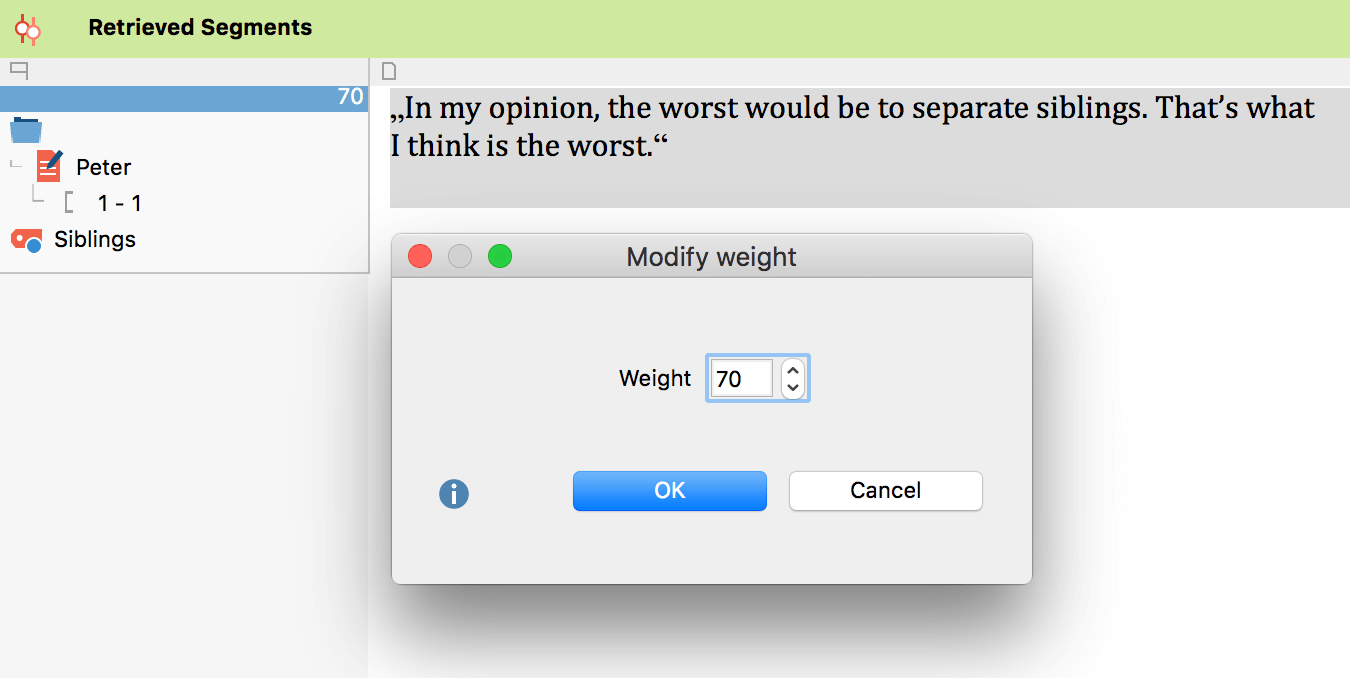This article is a guest post by Alexandra C. Schmidt who is a psychologist and research assistant at the youth welfare office in Karlsruhe, Germany. In her recent research project on homicide within the family, Alexandra C. Schmidt uses weight scores of coded segments in MAXQDA to simplify team communication. The project is funded by the “Stiftung Deutsche Jugendmarke e.V.,” headed by Dr. Susanne Heynen (head of the youth welfare office in Karlsruhe) and Dr. Frauke Zahradnik (head of the children office of the city of Karlsruhe), and conducted by Alexandra Schmidt, who is holding a diploma in psychology.

Dr. Susanne Heynen, Psychologist Alexandra C. Schmidt, Dr. Frauke Zahradnik (from right to left).
The Research Project
This study seeks to analyze the perceptions of children and adolescents who are left behind after homicide within the family. The research goal is to explore the young people’s individual views, their experiences, and their needs for assistance. For the first time in Germany, the study on this topic shall contribute to gather data and obtain results in order to improve practices of youth welfare. By conducting new data this research shall guarantee a better support for children and adolescents who lost relatives in the context of separation, divorce, and conflicts within a relationship. Furthermore, views of professional support centers will be analyzed. Hence, this research project contributes firstly to quality assurance in the context of child and youth services and secondly to the improvement of alternative support organizations.
Research goal is to investigate what appeared to be the best help and assistance for the affected children and adolescents, and which requirements emerged. Another goal is to explore consequences of the results for youth welfare and other institutions. 17 problem-centered interviews have been conducted so far as well as 17 informal interviews with helpers. These interviews include the helper’s expertise, their experiences and thoughts on relevant topics such as crime victims compensation law (“Opferentschädigungsschutz”) or professional practice of the police.
In October 2015, first interim findings have been discussed with 26 experts and administration staff from Karlsruhe. Additionally, affected survivors participated the discussion. The research design is based on qualitative methodologies. Due to data security and aspects of research ethics and law, we decided to use categories in our analysis instead of focusing on case studies. We chose this procedure in order to guarantee our participants’ anonymity and security. For analyzing our data we chose Udo Kuckartz’ structural content analysis as research method.
Working with Weights
One of the project’s special features is the discussion of the interview contents with both the research group and experts in the field. To prepare those discussions it is always very helpful to mark relevant text segments. In order to do so we used weights in MAXQDA. The use of this function enabled us to mark certain segments that illustrated certain codes or subcodes in a special way or seemed to be characteristic for those categories. This way we could prioritize those segments, which simplified our research on complex data.

This segment was assigned with weight 70. We chose this value because we assumed this would emerge as a very relevant topic during our research process. The value 70 was defined as an evidence for this in advance. While some text segments were assigned with the values 70 or 90 (for a “characteristic text segment”), other segments were not assigned to any weigh at all. Currently, the analysis is not finished yet, hence, new values will be assigned and labeled and priorities will be adjusted.
For preparing a discussion in the research group or with experts, we recalled the list of codings for the topics that need to be discussed. We used weight filters to make sure that only text segments with values greater or equal to 70 are displayed.

Sorting by Weight (left) and Exporting the List of Coded Segments (right)
One advantage of working with weights is that it is possible to export the text segments (in order of their weights) in Excel format and print it for every participant of the discussion. This function simplifies the access to the data for a group of participants. It helps to structure complex data and thus to save time. Additionally, this function can be helpful for the selection of relevant quotes serving as anchor points for your analysis.
Prospective Procedure
The data collection is nearly finished. Due to limitations of time and financial resources our capacity allows only sporadic conducting of interviews. In the upcoming months, the focus will lie on an analysis of the data, the draft of the final report, and on the organization of the closing event that will take place in July in Karlsruhe.
Alexandra C. Schmidt, holds a diploma in psychology and is research assistant at the youth welfare office in Karlsruhe, Germany. She conducts the research project as well as the interviews in the context of a study titled: „Homicide within the family in the context of conflicts in relationships, separation, and divorce – consequences for youth welfare“
Contact:
Stadt Karlsruhe
Sozial- und Jugendbehörde
Jugendamt
Diplom-Psychologin Alexandra C. Schmidt
Südendstraße 42
76135 Karlsruhe
Telefon: +49 721 133-3837
Fax: +49 721 133-95-3837
E-Mail: forschungsprojekt.toetungsdelikte@sjb.karlsruhe.de
Further information about the research project (in German):
alexandra_christiane_schmidt@gmx.de




